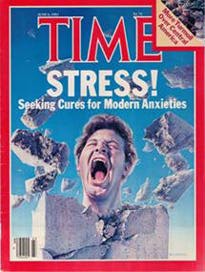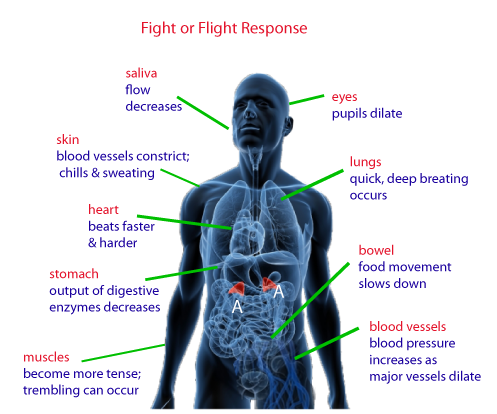America’s #1 Health Problem
 Time magazine’s June 6, 1983 cover story called stress “The Epidemic of the Eighties” and referred to it as our leading health problem; there can be little doubt that the situation has progressively worsened since then. Numerous surveys confirm that adult Americans perceive they are under much more stress than a decade or two ago. A 1996 Prevention magazine survey found that almost 75% feel they have “great stress” one day a week with one out of three indicating they feel this way more than twice a week. In the same 1983 survey only 55% said they felt under great stress on a weekly basis. It has been estimated that 75 – 90 percent of all visits to primary care physicians are for stress related problems.* Job Stress is far and away the leading source of stress for adults but stress levels have also escalated in children, teenagers, college students and the elderly for other reasons, including: increased crime, violence and other threats to personal safety; pernicious peer pressures that lead to substance abuse and other unhealthy life style habits; social isolation and loneliness; the erosion of family and religious values and ties; the loss of other strong sources of social support that are powerful stress busters.
Time magazine’s June 6, 1983 cover story called stress “The Epidemic of the Eighties” and referred to it as our leading health problem; there can be little doubt that the situation has progressively worsened since then. Numerous surveys confirm that adult Americans perceive they are under much more stress than a decade or two ago. A 1996 Prevention magazine survey found that almost 75% feel they have “great stress” one day a week with one out of three indicating they feel this way more than twice a week. In the same 1983 survey only 55% said they felt under great stress on a weekly basis. It has been estimated that 75 – 90 percent of all visits to primary care physicians are for stress related problems.* Job Stress is far and away the leading source of stress for adults but stress levels have also escalated in children, teenagers, college students and the elderly for other reasons, including: increased crime, violence and other threats to personal safety; pernicious peer pressures that lead to substance abuse and other unhealthy life style habits; social isolation and loneliness; the erosion of family and religious values and ties; the loss of other strong sources of social support that are powerful stress busters.
*Job Stress:
America’s Leading Adult Health Problem, by Paul J. Rosch, M.D., F.A.C.P., in USA Magazine, May 1991.
American Academy of Family Physicians Survey, 1988,U.S. News & World Report, December 11, 1995.
also, Research by Perkins (1994) cited in the Harvard Business Review showed that 60% to 90% of doctor visits were stress-related.
Contemporary stress tends to be more pervasive, persistent and insidious because it stems primarily from psychological than physical threats. It is associated with ingrained and immediate reactions over which we have no control that were originally designed to be beneficial such as:
•heart rate and blood pressure soar to increase the flow of blood to the brain to improve decision making
•blood sugar rises to furnish more fuel for energy as the result of the breakdown of glycogen, fat and protein stores
•blood is shunted away from the gut, where it is not immediately needed for purposes of digestion, to the large muscles of the arms and legs to provide more strength in combat, or greater speed in getting away from a scene of potential peril
•clotting occurs more quickly to prevent blood loss from lacerations or internal hemorrhage
These and myriad other immediate and automatic responses have been exquisitely honed over the lengthy course of human evolution as life saving measures to facilitate primitive man’s ability to deal with physical challenges.However, the nature of stress for modern man is not an occasional confrontation with a saber-toothed tiger or a hostile warrior but rather a host of emotional threats like getting stuck in traffic and fights with customers, co-workers, or family members, that often occur several times a day. Unfortunately, our bodies still react with these same, archaic fight or flight responses that are now not only not useful but potentially damaging and deadly. Repeatedly invoked, it is not hard to see how they can contribute to hypertension, strokes, heart attacks, diabetes, ulcers, neck or low back pain and other “Diseases of Civilization”.

